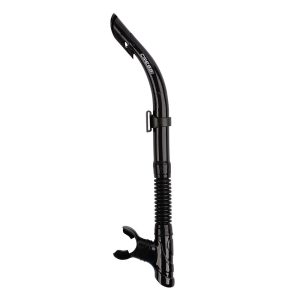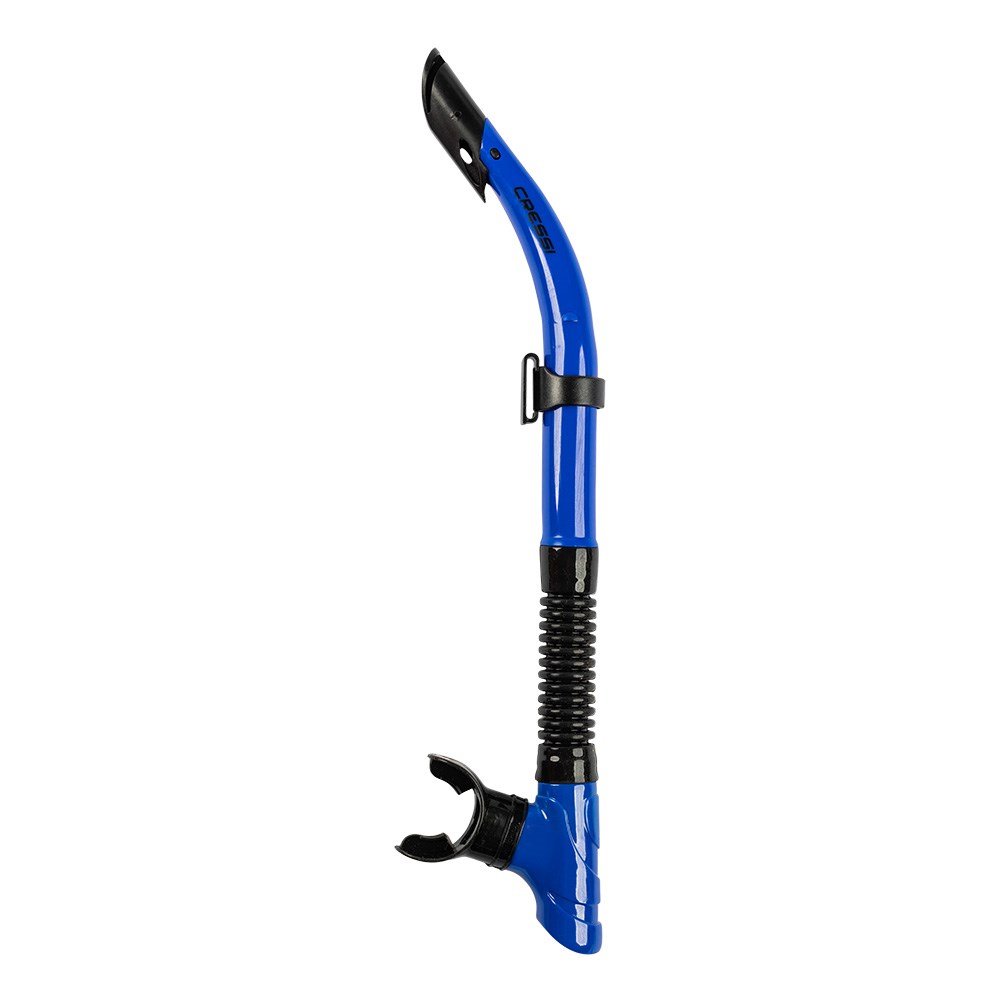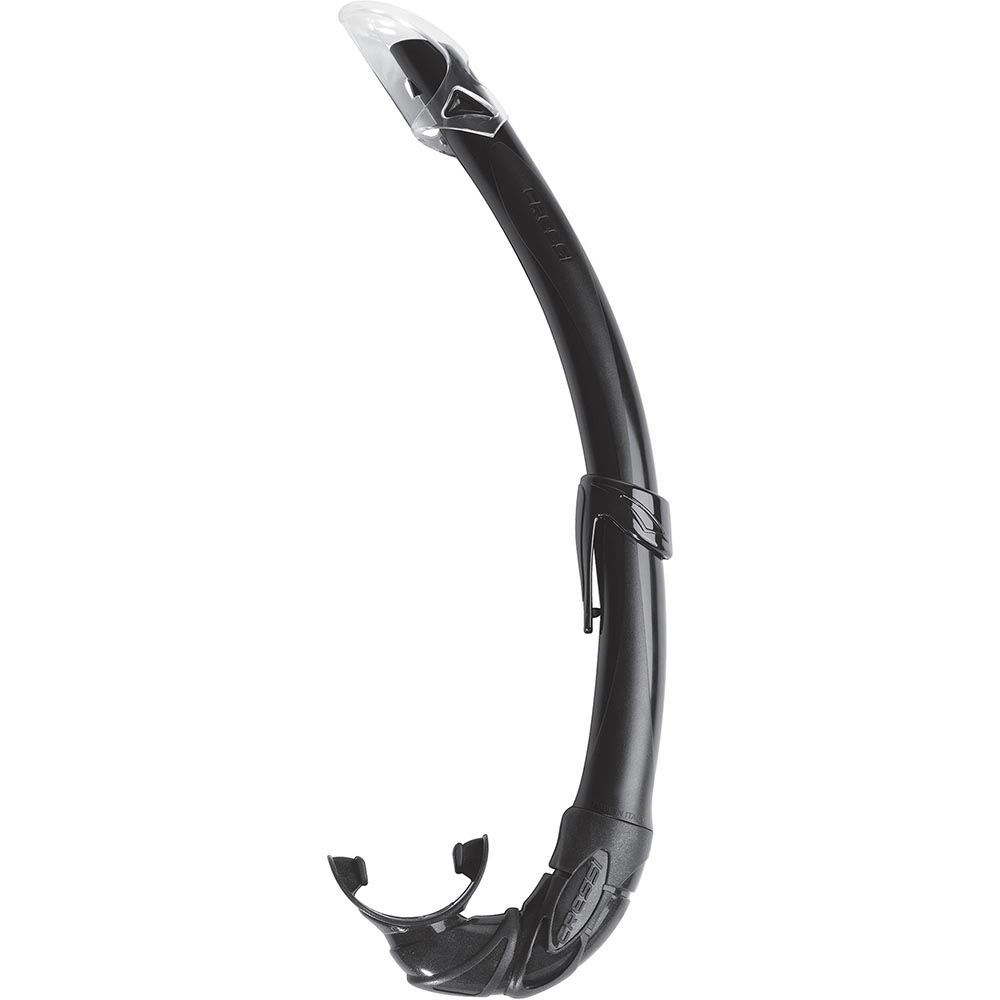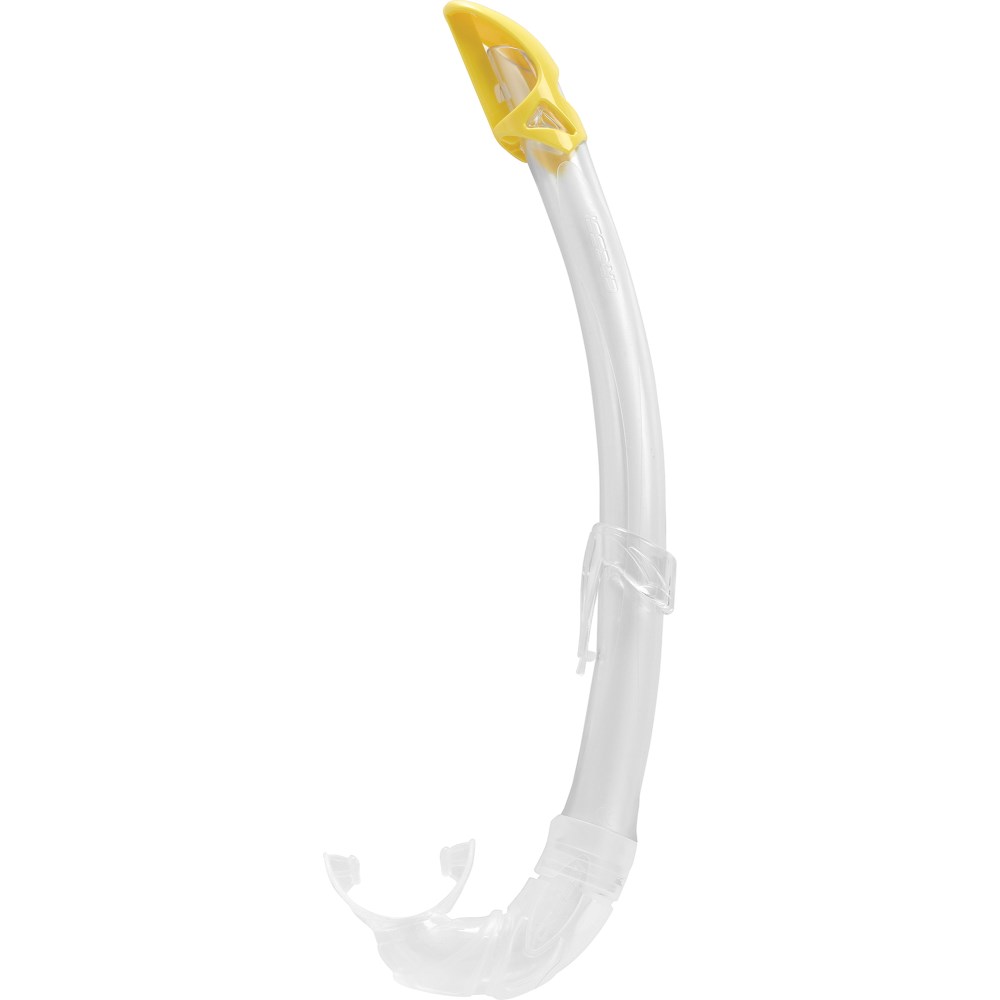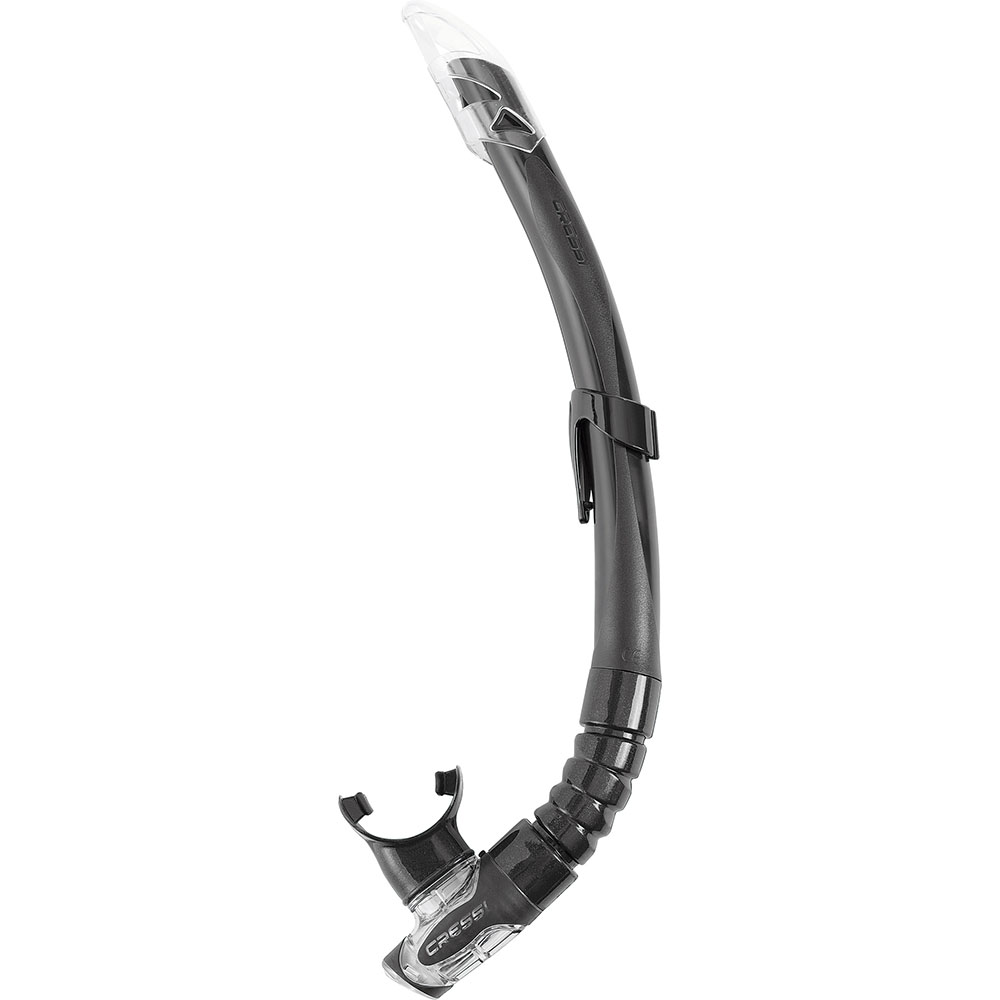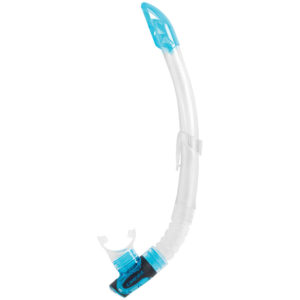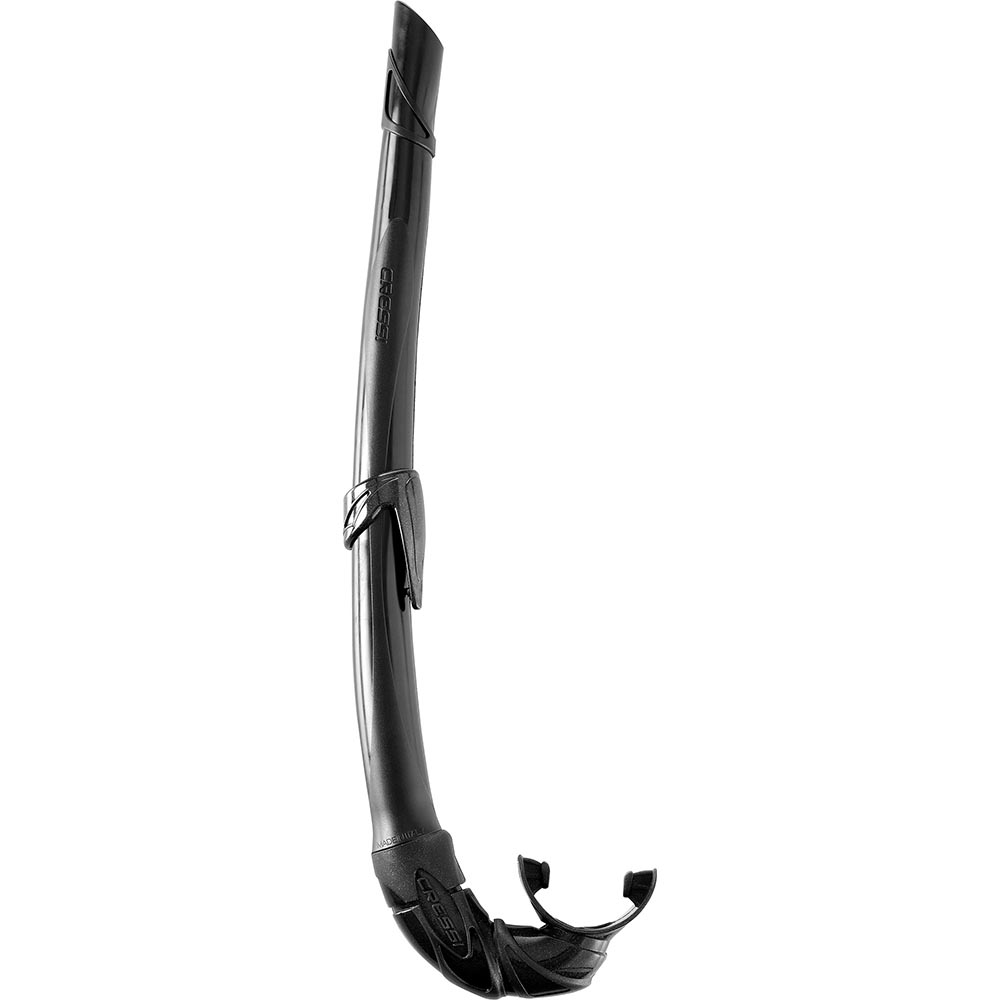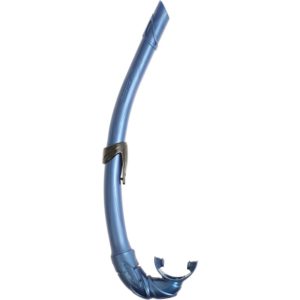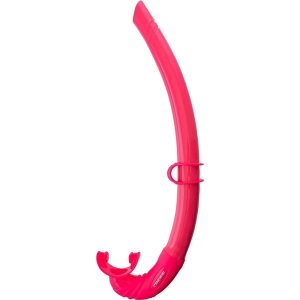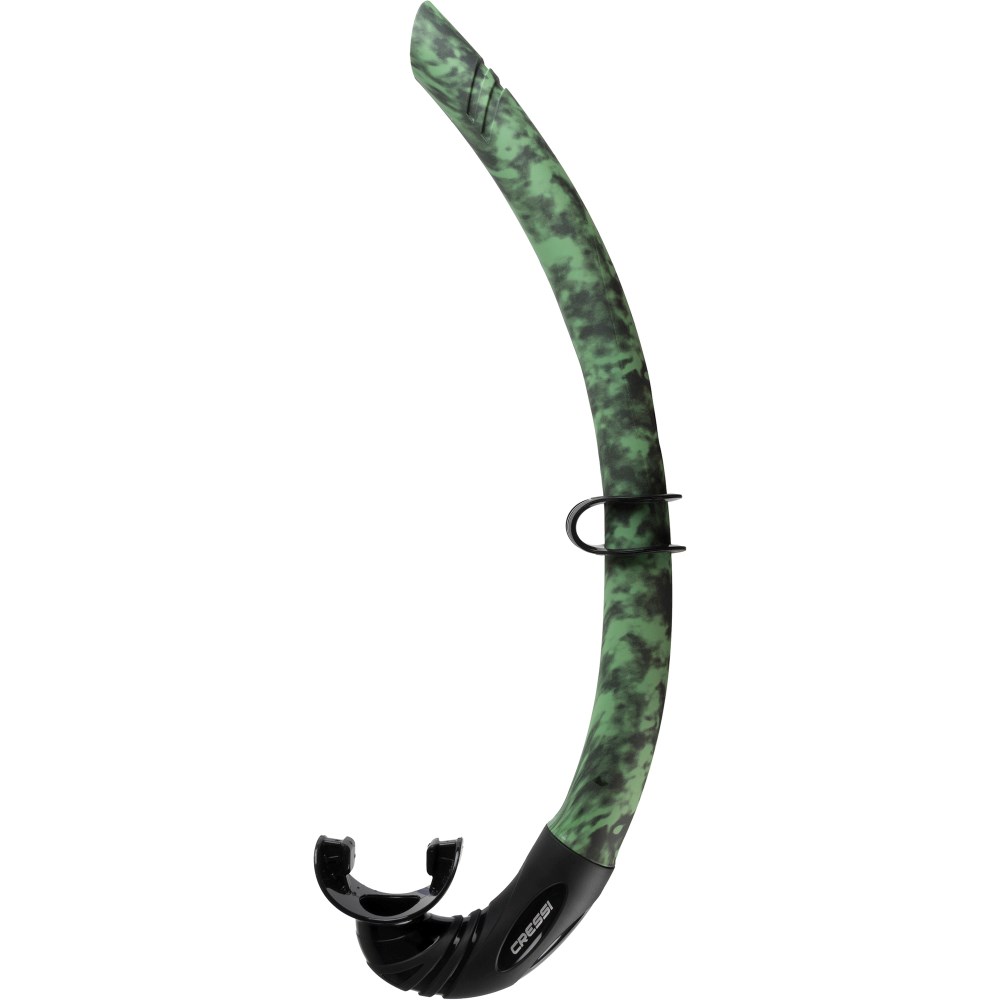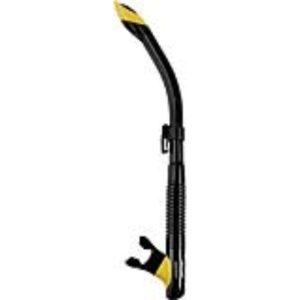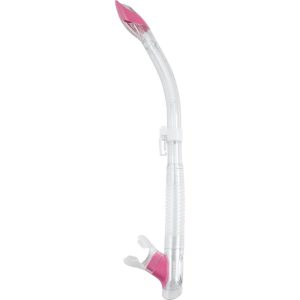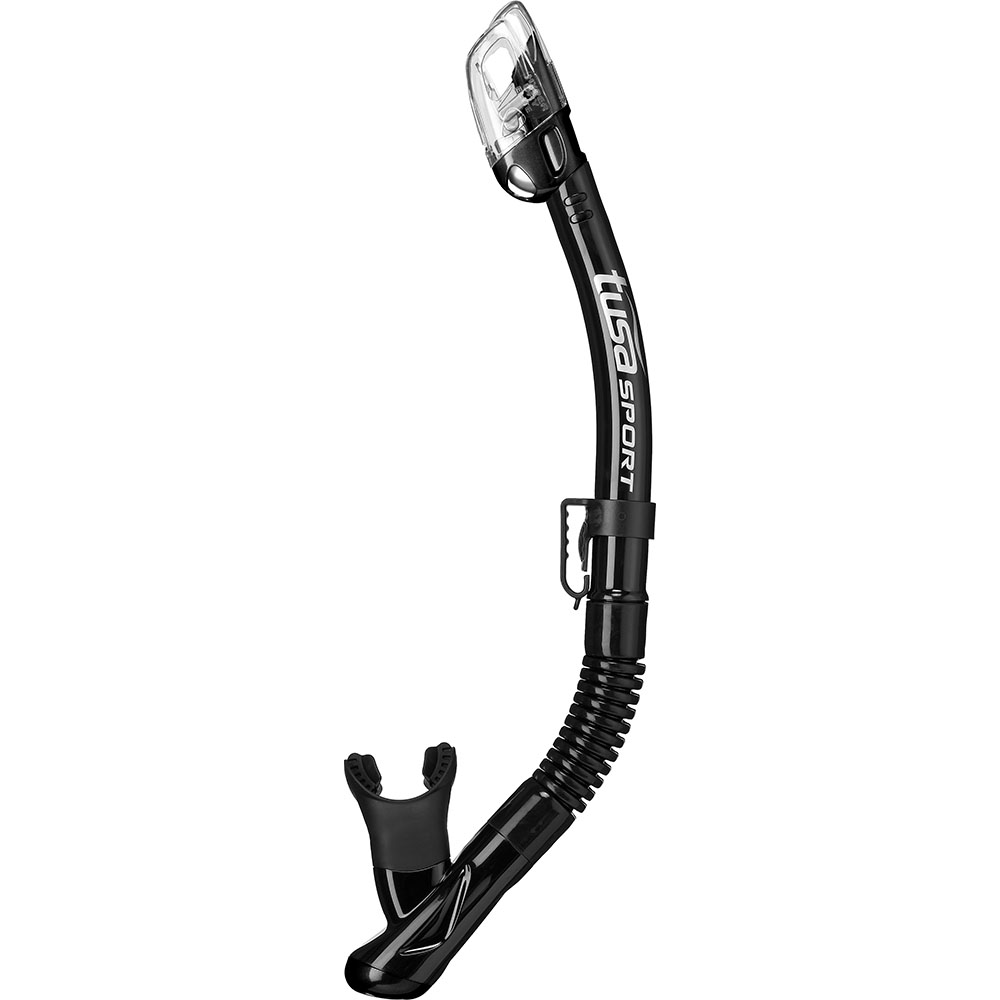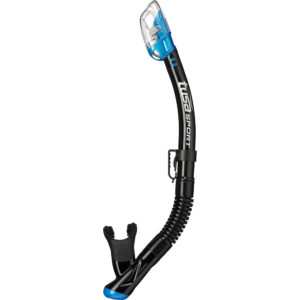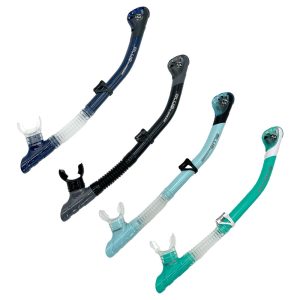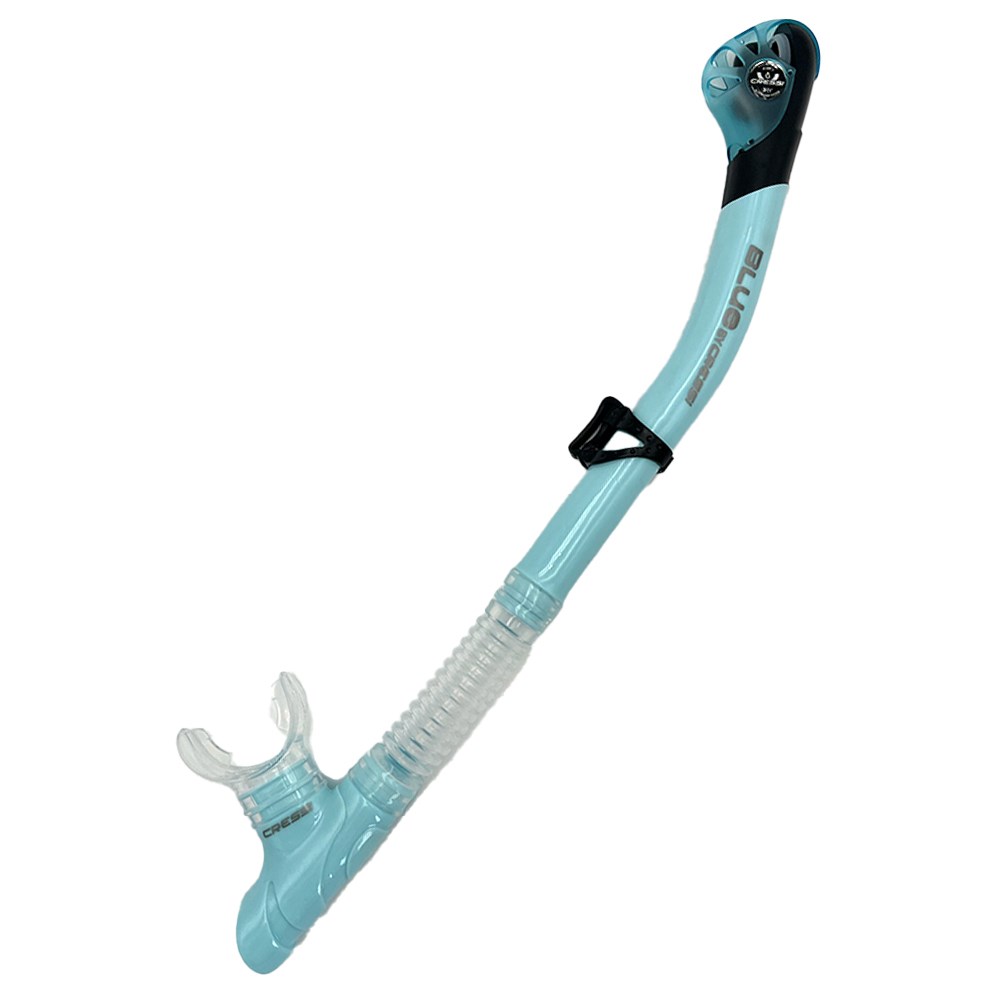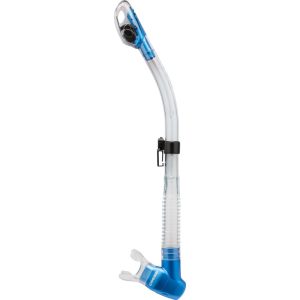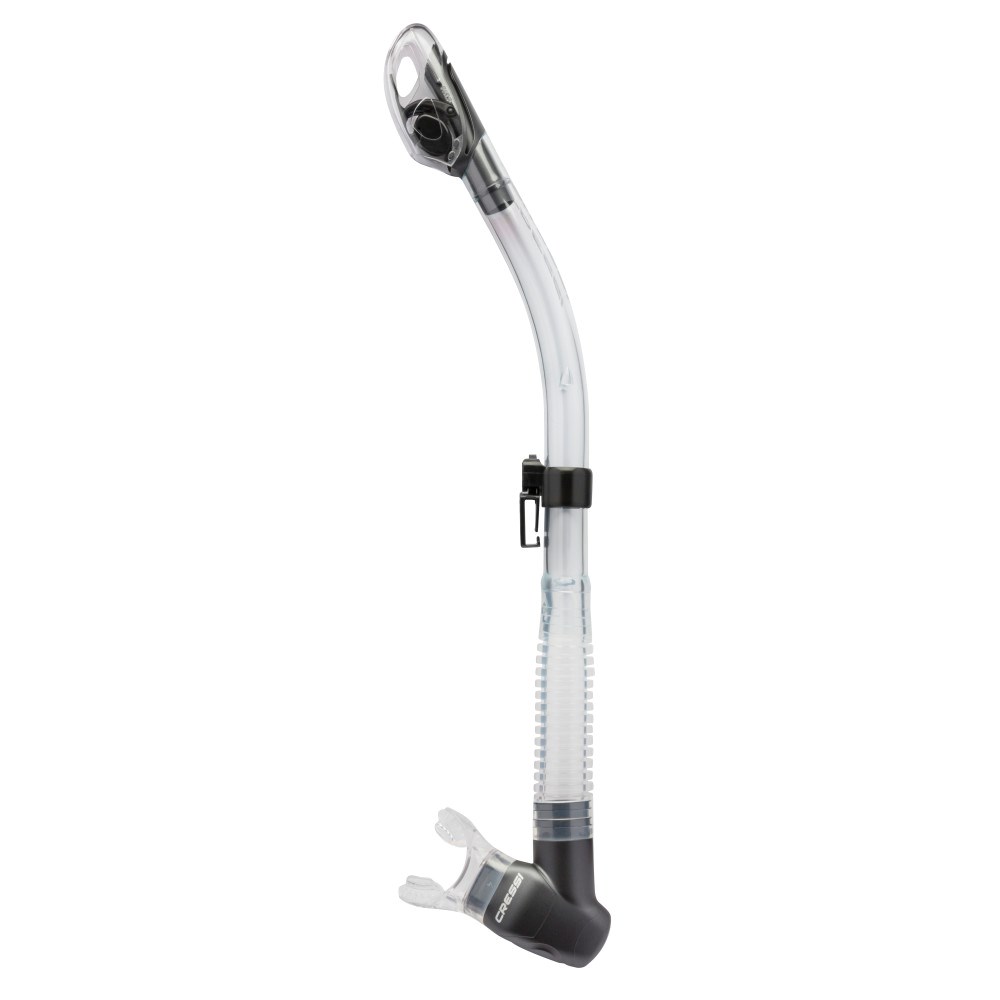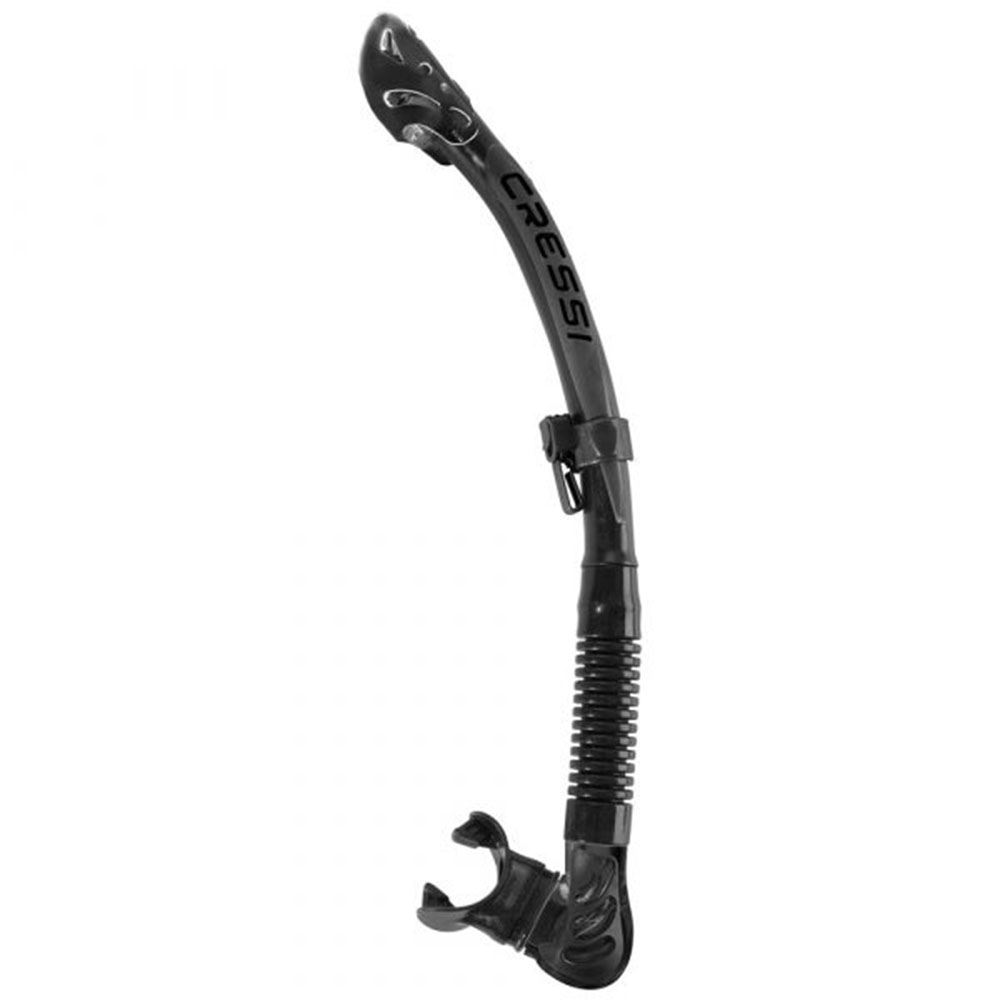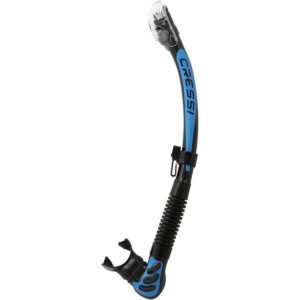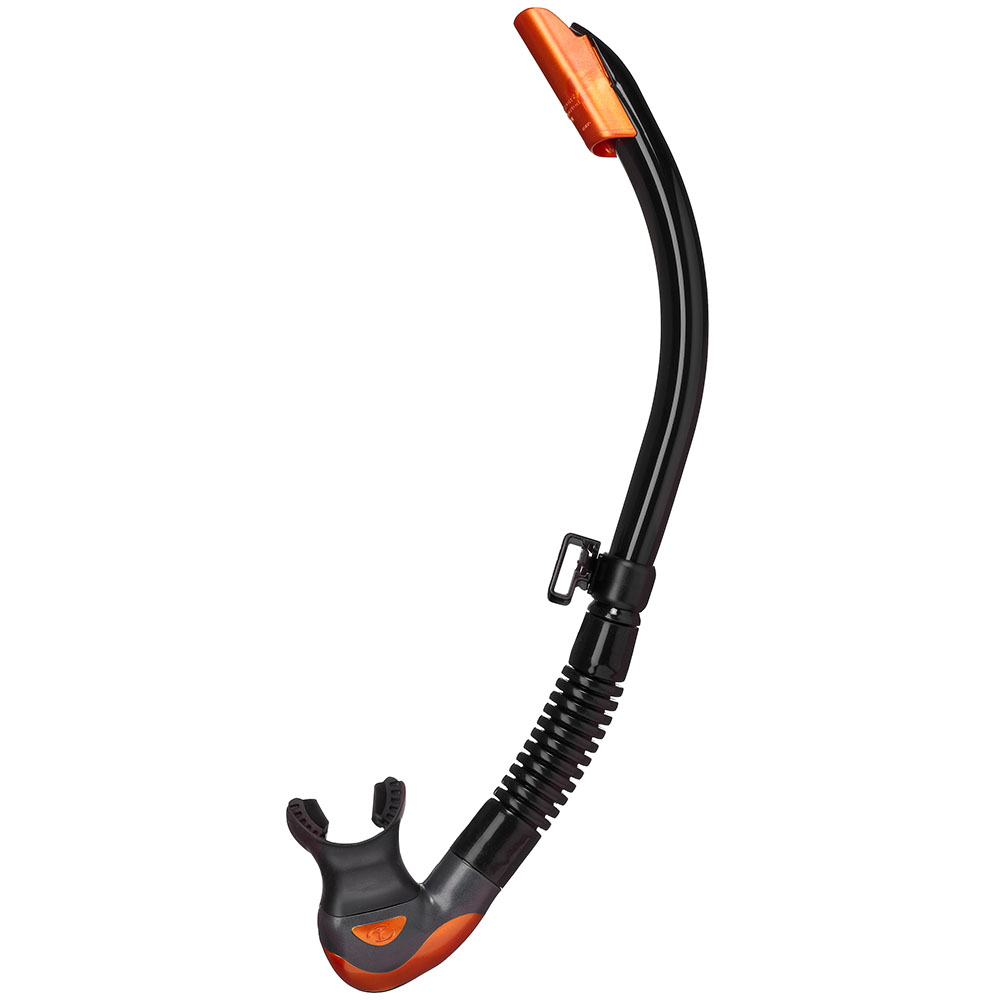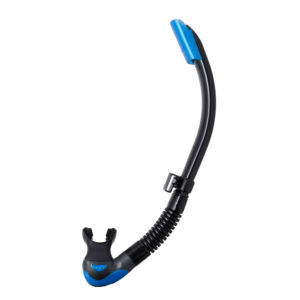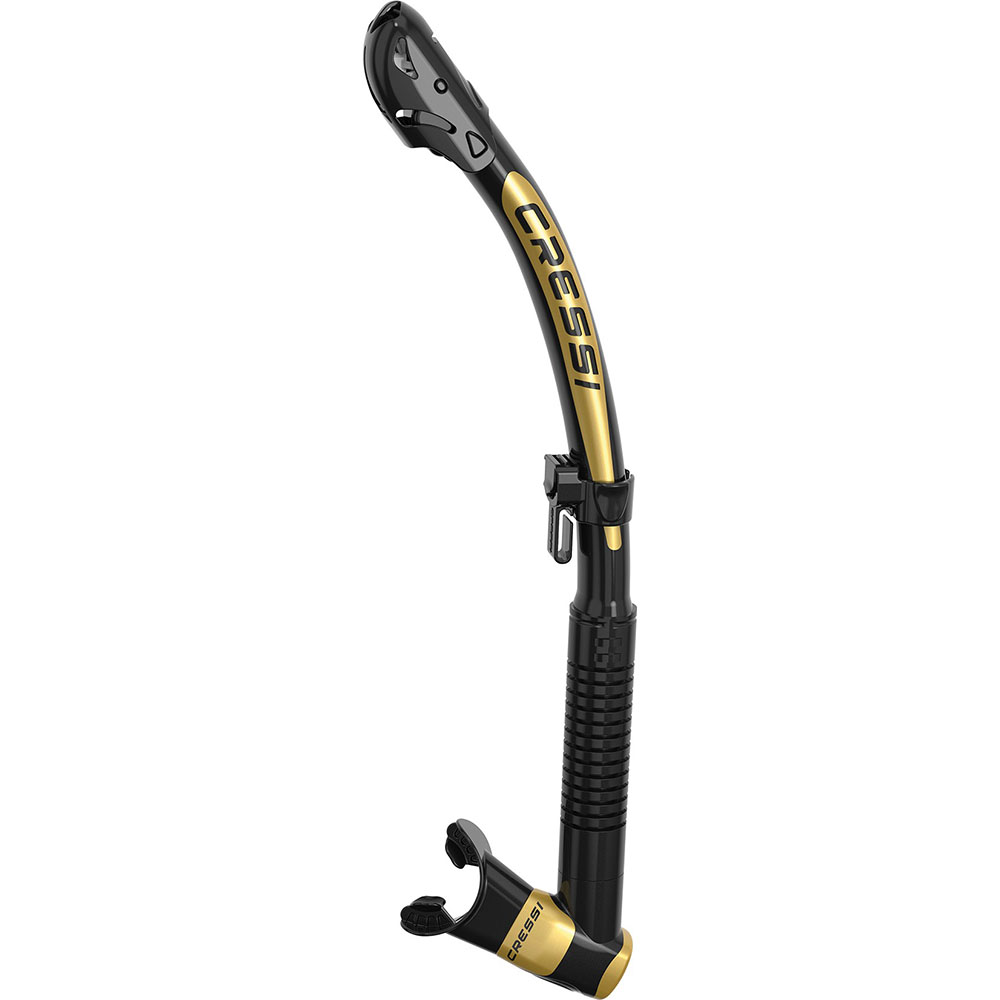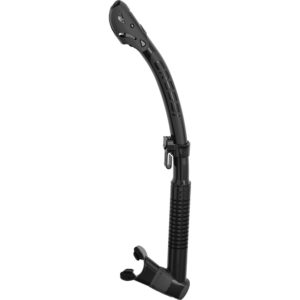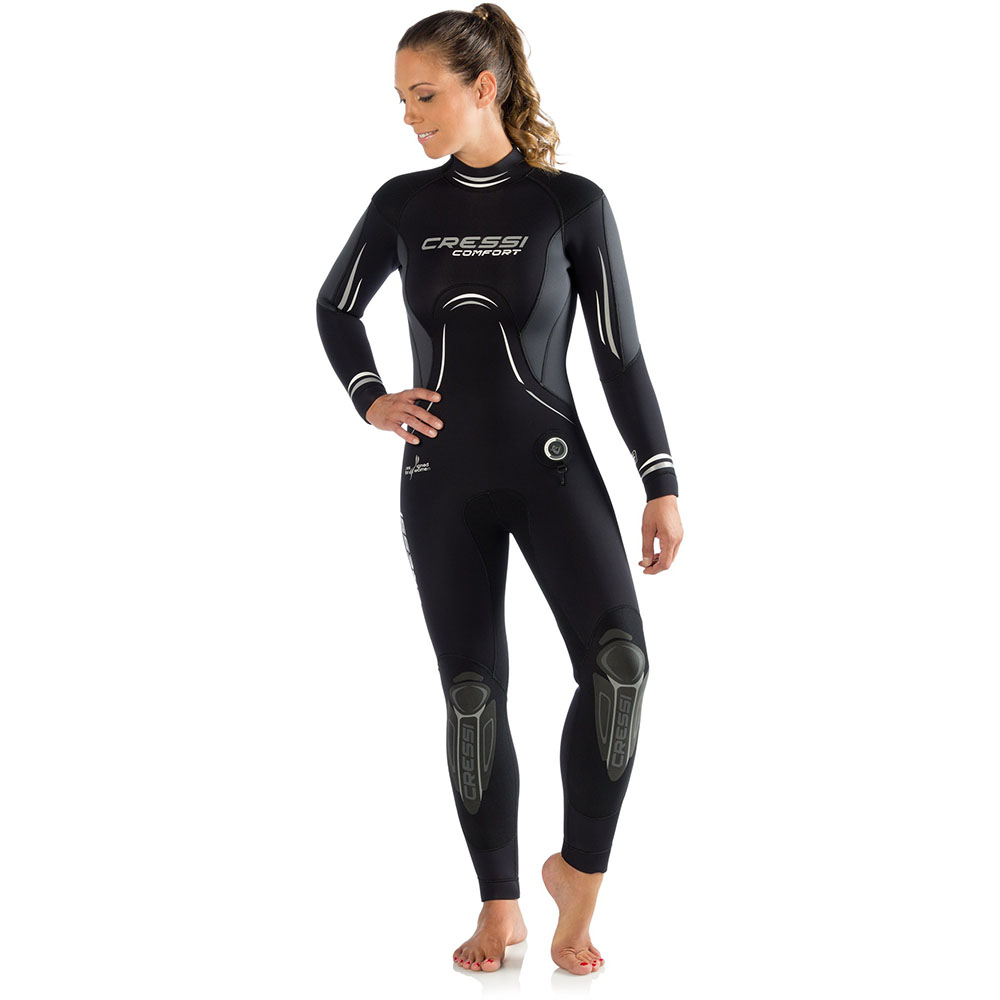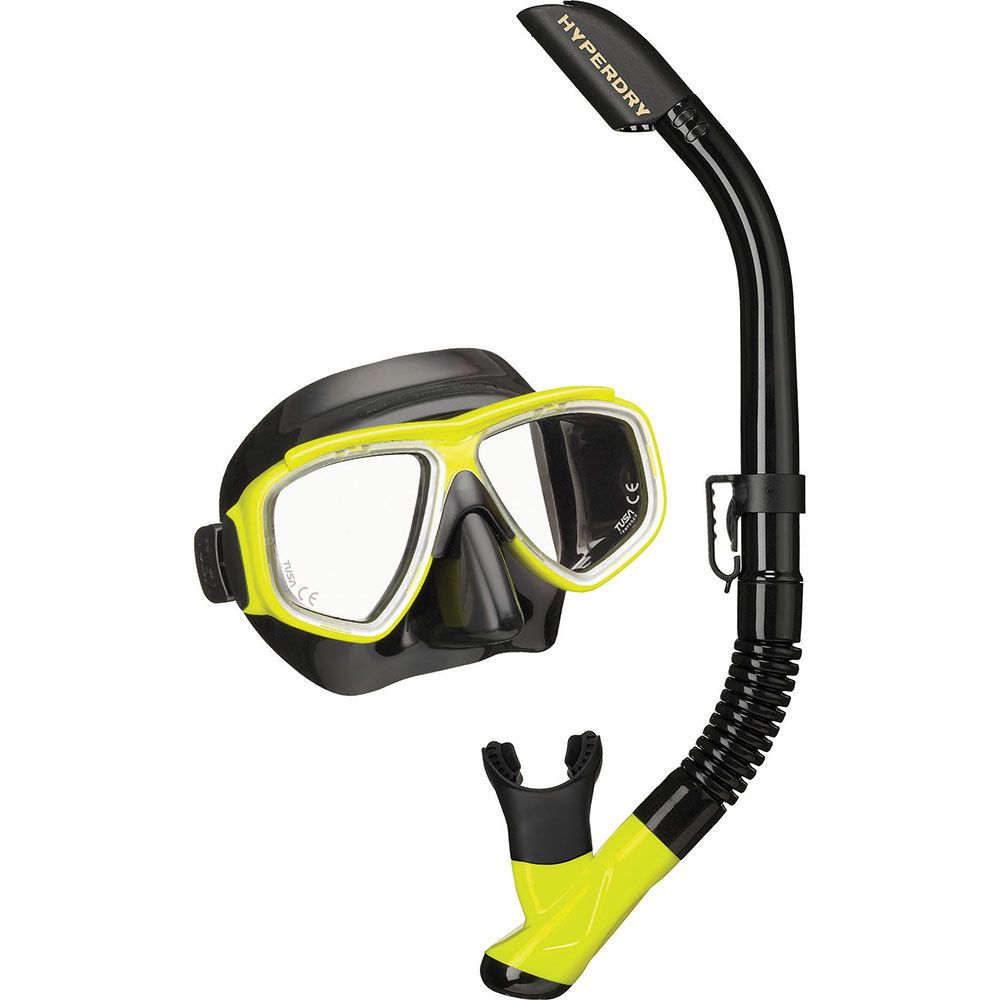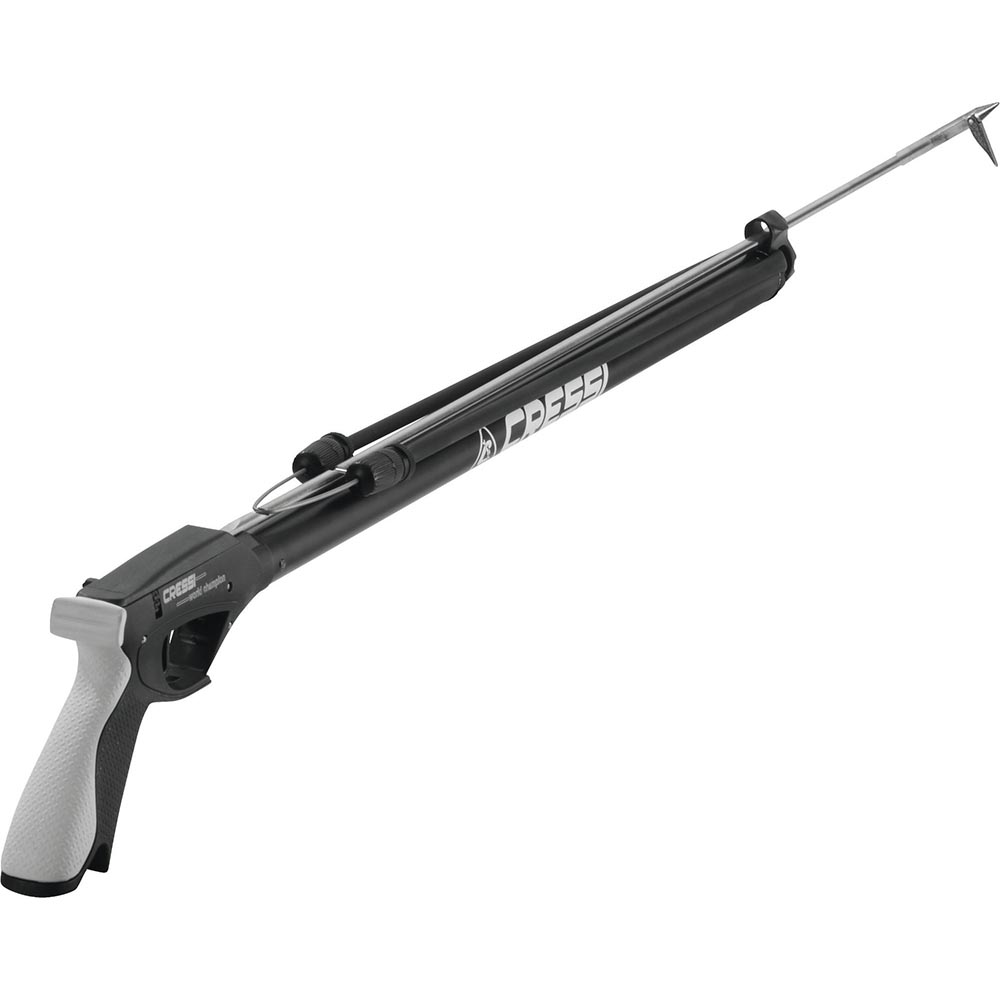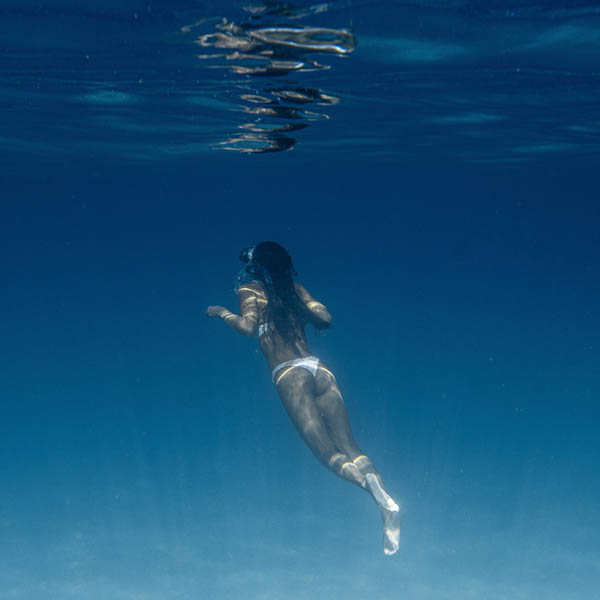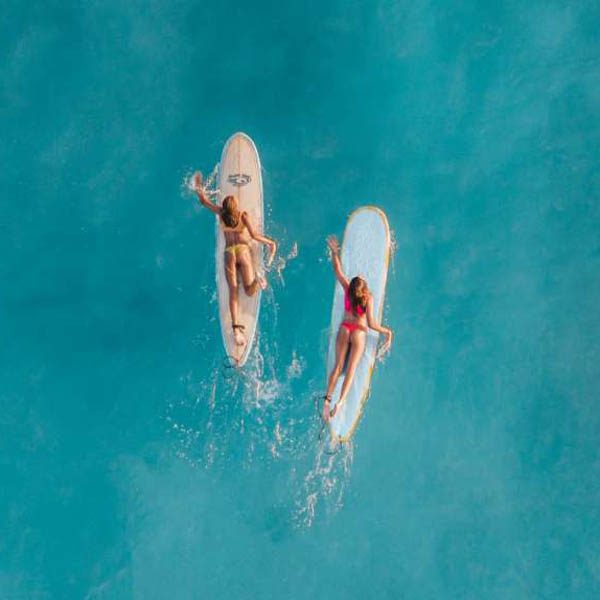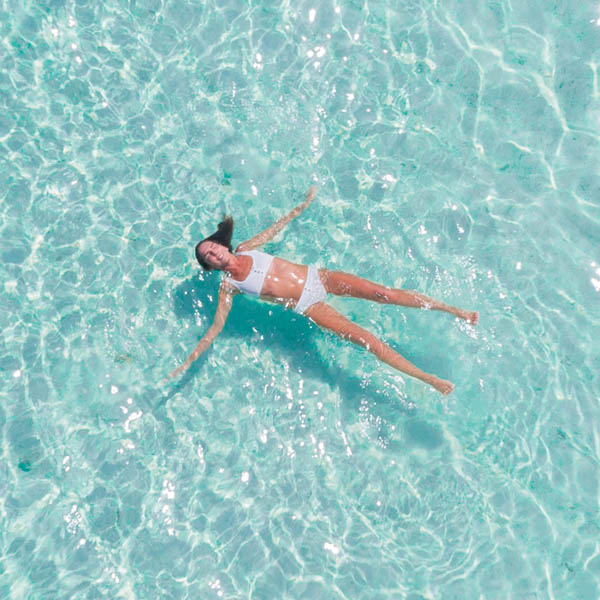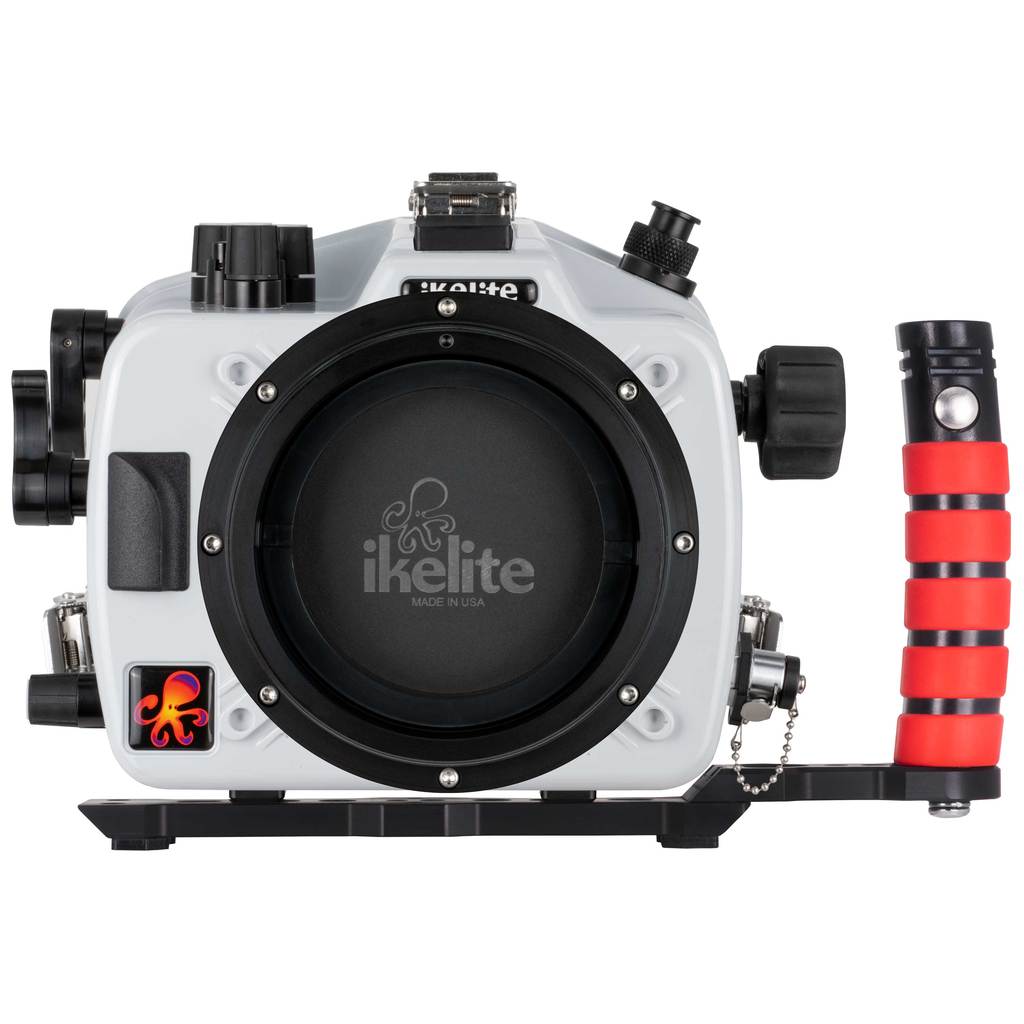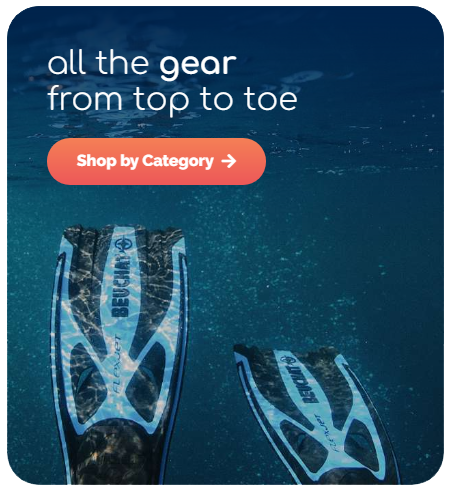Snorkels
Find here a fantastic range of snorkels for any underwater activity! Check out our dry snorkels (dry top snorkel), semi-dry snorkels, freediving snorkels, folding snorkels, flex snorkels, J-curve snorkels, spear fishing snorkels, junior snorkels, kids snorkels and our best value snorkel packs!
Not sure what is the difference between all these snorkel styles? Check or guide below to find out the best snorkel for you.
Which snorkel should I buy?
What sets different snorkel styles apart is the way the breathing tube of your snorkel is made, the curve or angle of the breathing tube, the type of material your snorkel is made of, and of course, the price. Ultimately, it depends on what you are going to use your snorkel for.
Consider this: Are you just floating on the surface? Instead of just floating, do you prefer diving to have a closer look at fish and coral while you are out snorkelling? Are you a scuba diver? Or do you want to go deep for as long as you can, like spear fishers and free divers?
Read on and understand, what sets apart the different types of snorkels and why you need to consider your activity before buying a snorkel. Tip: Most dive and snorkel enthusiasts own more than one type of snorkel.
What are the three main types of snorkels?
Most commonly snorkels are distinguished as traditional snorkels, semi-dry snorkels or dry snorkels (sometimes referred to as dry top snorkels or ultra-dry snorkels).
Traditional snorkels
Traditional snorkels are a very basic, rigid breathing tube with a mouthpiece, often cheap (and nasty), and they tend to get water in them. Available at budget prices in general sporting sports, but mostly not worth bothering with, in fact, they are a great way of spoiling your snorkelling fun. Oceansports does not stock these snorkels.
Dry snorkels
The most prominent feature of a is that it contains a floating object, typically a ball or spring-loaded valve, within the tube. This floating object creates a seal to keep the interior of the snorkel dry. This is great for taking short dives underwater, as the floating object will rise to the top of the snorkel and prevent any water from entering.
After emerging from the water, the object will drop down the snorkel tube, breaking the seal and allowing air to flow through.
Additionally, a dry snorkel has a splash guard at the top of the tube to reduce the entry of surface water. The snorkel also typically has a flexi-tube design, allowing it to be bent and adjusted to fit the contours of the snorkeler’s face. Finally, the dry snorkel is equipped with a purge valve, which allows any water that does enter the snorkel to be quickly expelled with a simple exhalation, which makes your snorkelling experience so much more relaxed.
One word of caution: the issue with a dry top snorkel is that the snorkel needs to remain completely upright, otherwise water can seep in due to the lack of a barrier.
So, if you intend to do a lot of short dives to completely immerse yourself in the underwater world, but not too deep, a dry snorkel is best for you, as it is designed to work best if you are submerged.
For deeper dives however, you will need a snorkel with less buoyancy and lots of flexibility to make it easy for you to dive deep without too much effort and too much drag. Increasing pressure may even damage your snorkel underwater.
The snorkel mouthpiece can be replaced if damaged.
In terms of price, these snorkels tend to be more expensive.
Semi dry snorkels
The semi dry is a combination of both, a traditional snorkel and a dry snorkel, and is designed with a tube that does not have a floating object inside of it to create a seal. The semi dry snorkel is made to be used in shallow waters, and the tube is designed in such a way that it prevents water from entering the tube while still allowing the user to breathe through it. The semi dry snorkel is considered a hybrid of the traditional and dry snorkels and is designed to be an easy to use and effective snorkelling tool.
This is why this type of snorkel is best used if you just want to stay on the surface, float, relax, and watch the fish and coral go by from the top.
If you want do want to go underwater while snorkeling, the semi dry snorkel tube will fill up with water due to an influx of water while submerged. To prevent the tube from filling up with water, you need to blow out air through the top of the snorkel tube when you come back up to the surface. This will help to expel the water that has built up in the tube and prevent it from filling up again.
Semi dry snorkels feature a purge valve and a purge sump, so any water that does get into the snorkel collected in a reservoir and can be easily blown out when you exhale.
The snorkel mouthpiece can be replaced if damaged.
In terms of price, semi-dry snorkels tend to be mid-range.
What is a freediving snorkel?
A freediving snorkel tends to be of soft material that creates no resistance when diving into the deep. Freedivers use these basic snorkels that are designed to be as streamlined as possible in order to reduce drag and resistance when diving. This helps them to stay underwater for longer breath holds, enabling them to dive to greater depths on a single breath.
The snorkel is usually kept short, simple (J-curved tube with mouthpiece and J-valve, no splashguard) with minimal features that could add unnecessary drag or weight underwater. Some models are even designed so that the snorkel can be tucked away behind the head when not in use, further reducing drag.
What is a spearfishing snorkel?
Much the same as for the freediving snorkel can be said about the spearfishing snorkel. Spearfishers want to stay down in the deep with minimal effort so they can concentrate on their fishing targets. Spear fishers will favour the same type of snorkel as free divers, a simple, soft J-curve snorkel that is streamlined and no fuss. The flexible and soft material also allows to bend back quickly if the spear fisher get caught on an overhang, cavern, or other objects.
However, sometimes conditions can be choppy out there. If this is the case, your simple snorkel may get a fair amount of water splashing into the top of the tube, since it has no splashguard. For this reason, many spear fishers carry two types of snorkels: a simple snorkel and a semi-dry snorkel for choppy waters. As many of the simple snorkels are made from soft rubber material, you can easily carry it in your pocket until you need it.
What is a J-Curve snorkel?
J-curve snorkels are a type of simple snorkels that free divers and spear fishers mostly use. The snorkel tube has a distinct and aquadynamic J-curve to fit close to your head and reduce drag and effort for the user. J-curve snorkels don’t feature purge valves (they have J valves), and mostly no splash guard.
The J-curve snorkel is not ideal for scuba diving since the ‘J’ shape tends to hold water at the bottom of the tube, and the straight part of the tube increases the amount of effort needed for the diver to move through the water.
Additionally, the mouthpiece tends to be in the diver’s way when diving as it creates interference with the scuba diver’s second stage. Scuba divers only use their snorkel on the surface, and so are better off with a semi-dry or a dry snorkel with splashguard.
What is a snorkelling snorkel?
As a snorkeller you might want to consider a semi-dry or a dry snorkel, depending whether you prefer to dive a lot or you just want to stay on the surface. Make sure your snorkel has a splash guard at the top, a purge valve and a rigid or semi-rigid curve that guides the mouthpiece to your mouth.
What is scuba diving snorkel?
To safe their compressed air scuba divers use a snorkel when swimming on the surface, for which a semi-dry or a dry snorkel will do.
Here comes the important bit: Scuba divers who attach the snorkel to their mask want to be looking for a flex snorkel with a flexible mouthpiece, that is hanging down during the dive, and not interfering with their second stage regulator during the dive. Once the regulator is removed, the snorkel is ready to be curved and put in the mouth with no effort. Look out for a snorkel with a flexible corrugated tube connected to the mouth piece, but not with a rigid curve.
However, some scuba divers prefer to fold up their snorkel and carry it in the BCD pocket. For cave, cavern, or wreck divers it is essential to have a folding snorkel so you they don’t get caught overhead or anywhere else when working with the guideline. In this case, look out for soft, folding snorkel that a spear fisher or free diver would use.
What is a kids snorkel?
Kids snorkels or junior snorkels have smaller mouth pieces and are generally a bit shorter. They come in dry snorkel and semi-dry kids snorkel styles and feature purge valves to make it easy for children to clear the water in the snorkel.
Kids snorkels are often sold together as a set with a kids snorkel mask and/or fins.
Why should I buy my own snorkel?
Many diving and snorkelling operators or dive schools will include snorkels in (free) snorkel gear hire or (free) dive gear hire. This is fine, but how do you know that your tour operator or dive school is following impeccable hygienic procedures to clean the snorkels? For hygiene reasons it is best to buy your own snorkel.
The same goes for your own mask. These are very personal equipment pieces, so it is best to have your own and have it adjusted to your needs. Snorkels can be attached to masks in many different ways, with traditional snorkel keepers or more advanced quick release snorkel keepers or mask strap clips. Carrying your own mask and snorkel set gives you the freedom to choose your own attachment that works best for you and that you are familiar with.
And while you can combine any mask and snorkel, some mask and snorkels work better together than others. It may be advantageous to purchase a mask and snorkel from the same manufacturer’s collection, or opt for a set, as they have been designed to work together optimally.
Do I wear my snorkel on the left or on the right?
Scuba diver are trained to use their snorkel on the left as not to cause interference with the second stage regulator. While there is no hard and fast rule for any other types of diving or snorkelling, some snorkels have an asymmetric design, and need to be worn on a particular side to get best results. This will most likely concern spear fisher or free diving snorkels, where aqua dynamics are essential, but always check your snorkel’s manufacturing instructions to find out whether you have a straight or an asymmetric snorkel.
How do I look after my snorkel?
Maintaining snorkels is straightforward – just give them a quick rinse with fresh water after each dive and let them dry before using them again.
When storing snorkels that have clear silicone components, it is important to keep them away from black latex rubber items to prevent the snorkel from becoming discoloured. For the longest life of the snorkel, it should be stored away from any heat sources and out of direct sunlight to avoid damage caused by extreme temperatures.
